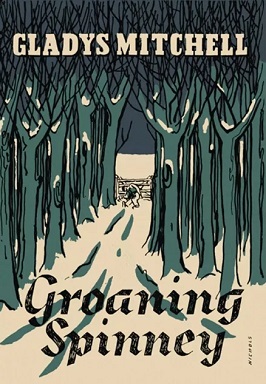
Groaning Spinney is a 1950 mystery detective novel by the British writer Gladys Mitchell. It is the twenty third in her long-running series featuring the psychoanalyst and amateur detective Mrs Bradley. It was later republished under the title of Murder in the Snow.

Watson's Choice is a 1955 mystery detective novel by the British writer Gladys Mitchell. It is the twenty eight in her long-running series featuring the psychoanalyst and amateur detective Mrs Bradley.

Merlin's Furlong is a 1953 mystery detective novel by the British writer Gladys Mitchell. It is the twenty sixth entry in her long-running series featuring the psychoanalyst and amateur detective Mrs Bradley.

Death and the Maiden is a 1947 mystery detective novel by the British writer Gladys Mitchell. It is the twentieth in her long-running series featuring the psychoanalyst and amateur detective Mrs Bradley.

The High Sheriff is a 1937 mystery detective novel by the British writer Henry Wade. Wade was a writer of the Golden Age of Detective Fiction, best known for his series featuring Inspector Poole. This was one of a number of stand-alone novels he wrote, structured as a partially inverted detective story.

The Man Who Grew Tomatoes is a 1959 mystery detective novel by the British writer Gladys Mitchell. It is the thirty second in the long-running series of books featuring Mitchell's best known creation, the psychoanalyst and amateur detective Mrs Bradley.
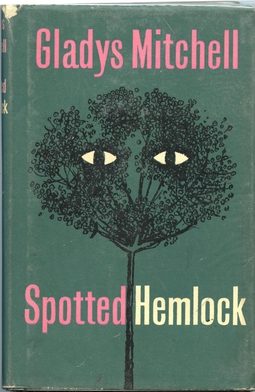
Spotted Hemlock is a 1958 mystery detective novel by the British writer Gladys Mitchell. It is the thirty first in the long-running series of books featuring Mitchell's best known creation, the psychoanalyst and amateur detective Mrs Bradley. It has been considered one of Mitchell's best novels along with other works such as The Saltmarsh Murders, Death at the Opera and The Rising of the Moon.

The Twenty-Third Man is a 1957 mystery detective novel by the British writer Gladys Mitchell. It is the thirtieth in the long-running series of books featuring Mitchell's best known creation, the psychoanalyst and amateur detective Mrs Bradley.
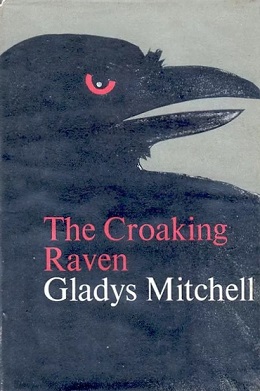
The Croaking Raven is a 1966 mystery detective novel by the British writer Gladys Mitchell. It is the thirty ninth in the long-running series of books featuring Mitchell's best known creation, the psychoanalyst and amateur detective Mrs Bradley. The title is taken from a line from Shakespeare's Hamlet "the croaking raven doth bellow for revenge".

Come Away, Death is a 1937 mystery detective novel by the British writer Gladys Mitchell. It is the eighth in her long-running series featuring the psychoanalyst and amateur detective Mrs Bradley. Although the plot revolves around Greek Mythology, the title is taken from a line from Shakespeare's Twelfth Night. It was followed by a loose sequel Lament for Leto in 1971.

The Devil at Saxon Wall is a 1935 mystery detective novel by the British writer Gladys Mitchell. It is the sixth in her long-running series featuring the psychoanalyst and amateur detective Mrs Bradley. It was the first of a number of her books to feature the theme of witchcraft, the result of hearing a lecture about it from her friend Helen Simpson who she dedicated the novel to.

Dead Men's Morris is a 1936 mystery detective novel by the British writer Gladys Mitchell. It is the seventh in her long-running series featuring the psychoanalyst and amateur detective Mrs Bradley. It was the first to be published by Michael Joseph who released all the subsequent fifty nine novels in the series. It was later republished with the alternative title Death Comes at Christmas.

They Never Say When is a 1944 thriller novel by the British writer Peter Cheyney. It is the sixth in his series of novels featuring the London private detective Slim Callaghan, a British version of the increasingly popular hardboiled American detectives.

Hangman's Curfew is a 1941 mystery detective novel by the British writer Gladys Mitchell. It is the twelfth in her long-running series featuring the psychoanalyst and amateur detective Mrs Bradley.
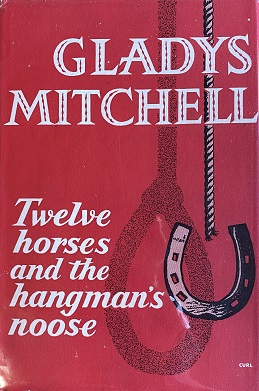
Twelve Horses and the Hangman’s Noose is a 1956 mystery detective novel by the British writer Gladys Mitchell. It is the twenty-ninth in the long-running series of books featuring Mitchell's best known creation, the psychoanalyst and amateur detective Mrs Bradley.

Death in Fancy Dress is a 1933 mystery detective novel by the British writer Anthony Gilbert, the pen name of Lucy Beatrice Malleson. It was republished in 2019 by British Library Publishing as part of a series featuring traditional crime novels. It takes the form of a country house mystery, a popular branch of the genre during the era.

When Last I Died is a 1941 mystery detective novel by the British writer Gladys Mitchell. It is the thirteenth in her long-running series featuring the psychoanalyst and amateur detective Mrs Bradley. In a review in The Observer, Maurice Richardson described it as "perhaps Miss Mitchell’s best, most ingenious crime story yet."
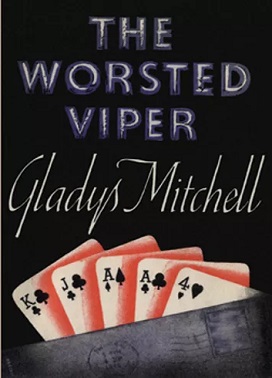
The Worsted Viper is a 1943 detective novel by the British writer Gladys Mitchell. It is the fifteenth in her long-running series featuring the psychoanalyst and amateur detective Mrs Bradley. Bradley was one of a number of investigators active during the Golden Age of Detective Fiction. Much of the novel takes place on the Norfolk Broads.

Sir John Magill’s Last Journey is a 1930 detective novel by the Irish writer Freeman Wills Crofts. It is the sixth in his series of novels featuring Inspector French, a prominent figure of the Golden Age of Detective Fiction. Much of the novel takes place in Northern Ireland, particularly around Belfast, where Crofts had spent a great deal of his younger years before moving to England. As with many of his puzzle mysteries its solution revolves around railway timetables as well as the possible distance a boat could cover in a certain time.

The Two Graphs is a 1950 detective novel by John Rhode, the pen name of the British writer Cecil Street. It is the fiftieth in his long-running series of novels featuring Lancelot Priestley, a Golden Age armchair detective. It was published in America by Dodd Mead under the alternative title Double Identities. Writing in The Observer Maurice Richardson noted a "slight slackening of tension towards the finish but an excellent specimen of Rhode’s later period."




















